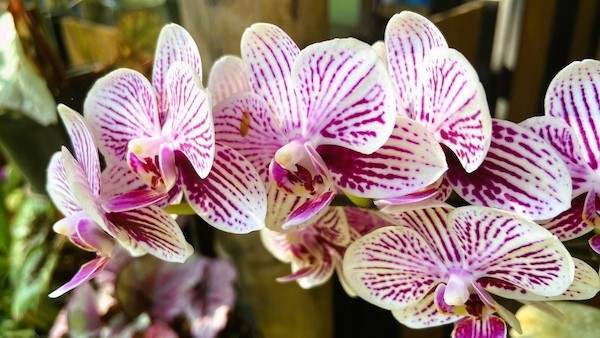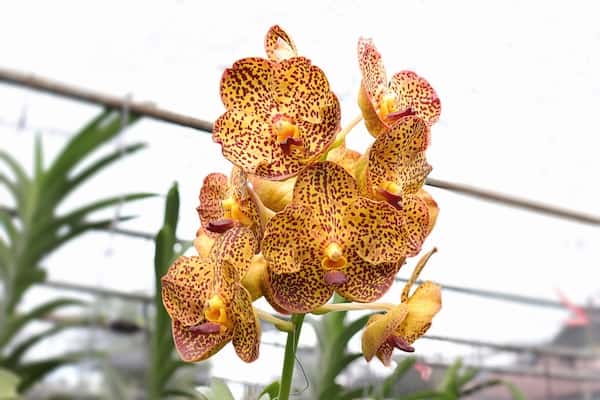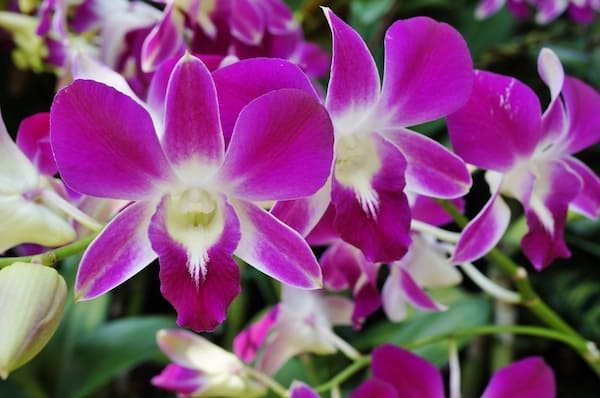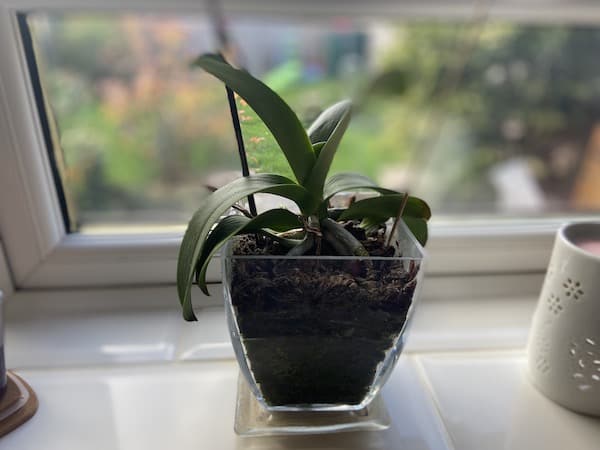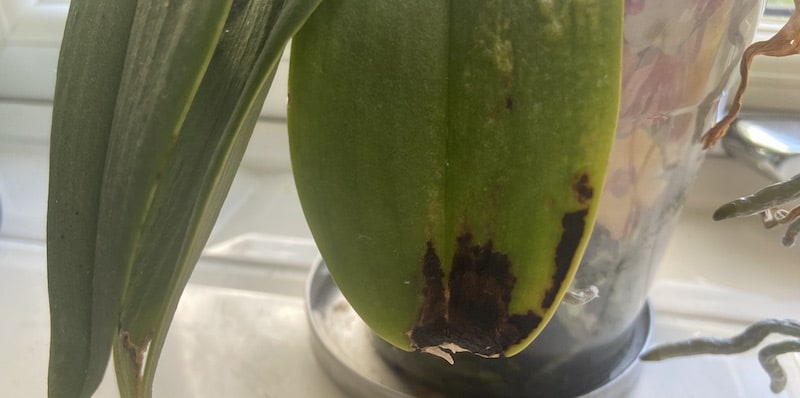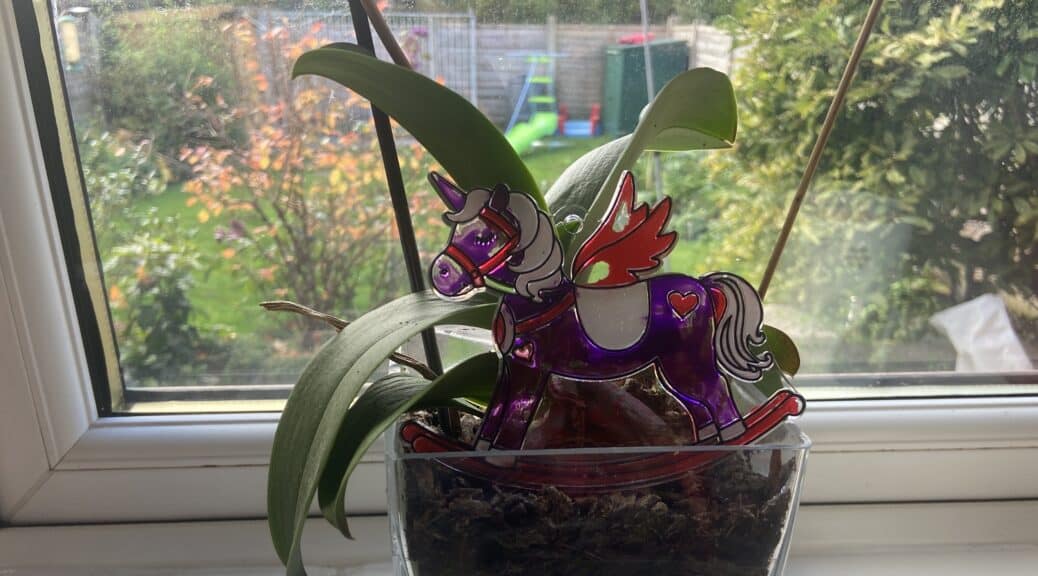
How long do orchids live and how to help them live longer?
Our site is reader supported, this means we may earn a small commission from Amazon and other affiliates when you buy through links on our site.
With sufficient care and attention, it’s not unusual for orchids in the home to live for up to 10 to 15 years or even longer. The orchid blooms can last for up to 16 weeks, depending on the type of orchid. There are a few key things you can do to increase the length of both your orchid blooms and plants, including care and maintenance. I cover all that here in this guide, starting with how long you can expect orchids to live.
How long do orchid plants live?
The life span of an orchid plant depends on its species and its growing environment, plus how well you look after it. Dendrobium orchids (one of the two most popular orchid types for the home) can survive for between 10 and 15 years if looked after correctly.
Phalaenopsis orchids (the other popular type and my personal favorite, aka moth orchids) can easily live just as long. These orchids are easy to grow. They’re hardier and more forgiving than other orchids and are often a great choice for beginners.
How long do orchid blooms live?
Different species of orchid bloom for different periods of time. Some have only one blooming period with few blooms, but they last a long time. Others have more blooms for a shorter period of time, but they bloom more, often a couple of times in a single season.
Dendrobium orchids have an average of four to eight blooms per stem. The blooms are of varied sizes and come in many colors. They appear between February and June and usually last around six weeks. There’s only one blooming period with these orchids per year. They also produce offshoot stems (called keikis) that you can transplant to propagate the plant.
Phalaenopsis orchids have several spikes, each of which produces five to 10 blooms at one time. This happens in late winter or early spring, making them great Christmas gifts along with poinsettias. Each flower lasts up to a very impressive three months, so you can see why this is a popular orchid as not many plants can achieve this. However, if you cut the spikes back and place the orchid in a slightly cooler place, it may just rebloom in the same season.
Keeping your orchid plant happy
You can extend how long your orchid lives by ensuring that it has the growing environment and care conditions that lead to its best health.
Growing conditions
The potting soil mix is a key component of the orchid’s growing environment. Orchids need their own special mix of soil as regular potting soil is too heavy and dense for their slender roots. Plus, orchids are air plants and grow without soil in their natural habitat.
The correct light is also important to your orchid’s good health. Your orchid needs six to 12 hours of indirect sunlight which is difficult to obtain in the winter. My article, How much light do orchids need?, explains how you can ensure they get this.
And along with light goes temperature and moisture. Orchids are originally from the tropical rainforest and still like the humidity and warm temperatures of that environment. In How to grow and care for orchids, I explain what your orchid expects in terms of these environmental variants.
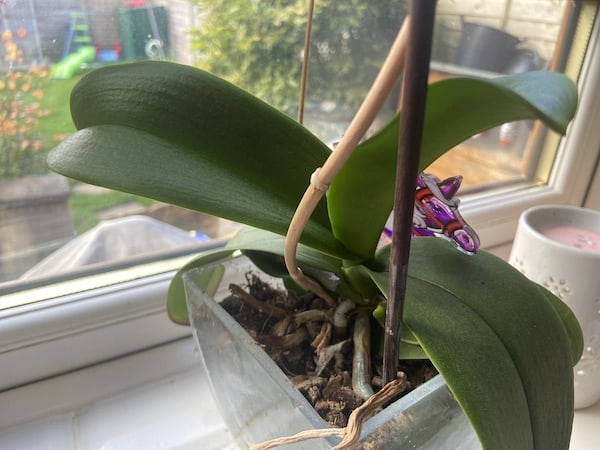
Care and maintenance
Watering is key to the long life of your orchid plant. Overwatering is the number one killer of orchids in the home. Learn how to set up the best watering schedule for your orchid plant and to look out for signs that you’re over-watering it. And look out for root rot, a fungal disease caused by over watering.
Fertilising
Each type of orchid species needs its own fertilising schedule. But generally, feed the orchid lightly using a dilution of the fertiliser, several times through the growing season. Watch out for fertiliser burn which appears as crystals on the top of the potting mix. This is when you give too much fertiliser and there’s an excess of the mineral salts that burn the orchid plant.
Repotting
Even if your orchid doesn’t grow too large for its current pot, it uses up the nutrients in its potting mix. Keep it healthy and long-lived by repotting it every two years. Check out When and how to repot an orchid for the details of this task.
Solving problems
No matter how carefully you look after your orchid, problems may arise. You have to solve them to make sure your orchid plant stays alive.
You may notice some general bugs on or around the orchid. Or perhaps black mould appears on the leaves. Check out my article on general orchid pests and diseases.
Or perhaps you notice a specific problem. Are your orchid leaves turning yellow? Or perhaps the leaves are an unattractive shade of brown. Is the orchid wilting, and perhaps the blooms are dropping? Is part of the stem turning brown?
Propagate the orchid plant
You can extend the life span of your orchid plant by growing one or more plants from it. You have the choice of using the division method (only available for some species of orchid), the cuttings method (if your orchid produces offshoots) or growing from seed (difficult and not recommended by me).
Head over to How to propagate orchids for information about this.
